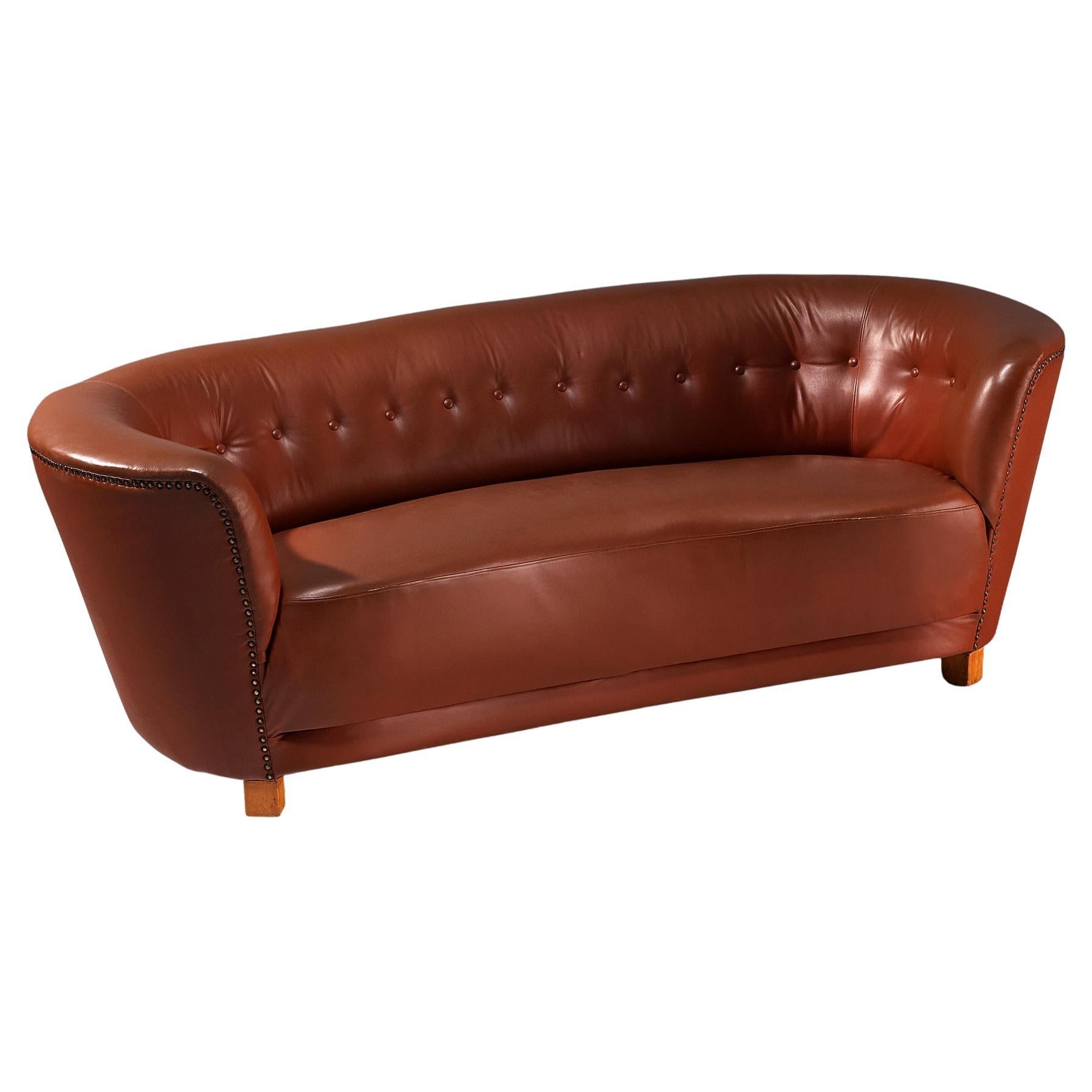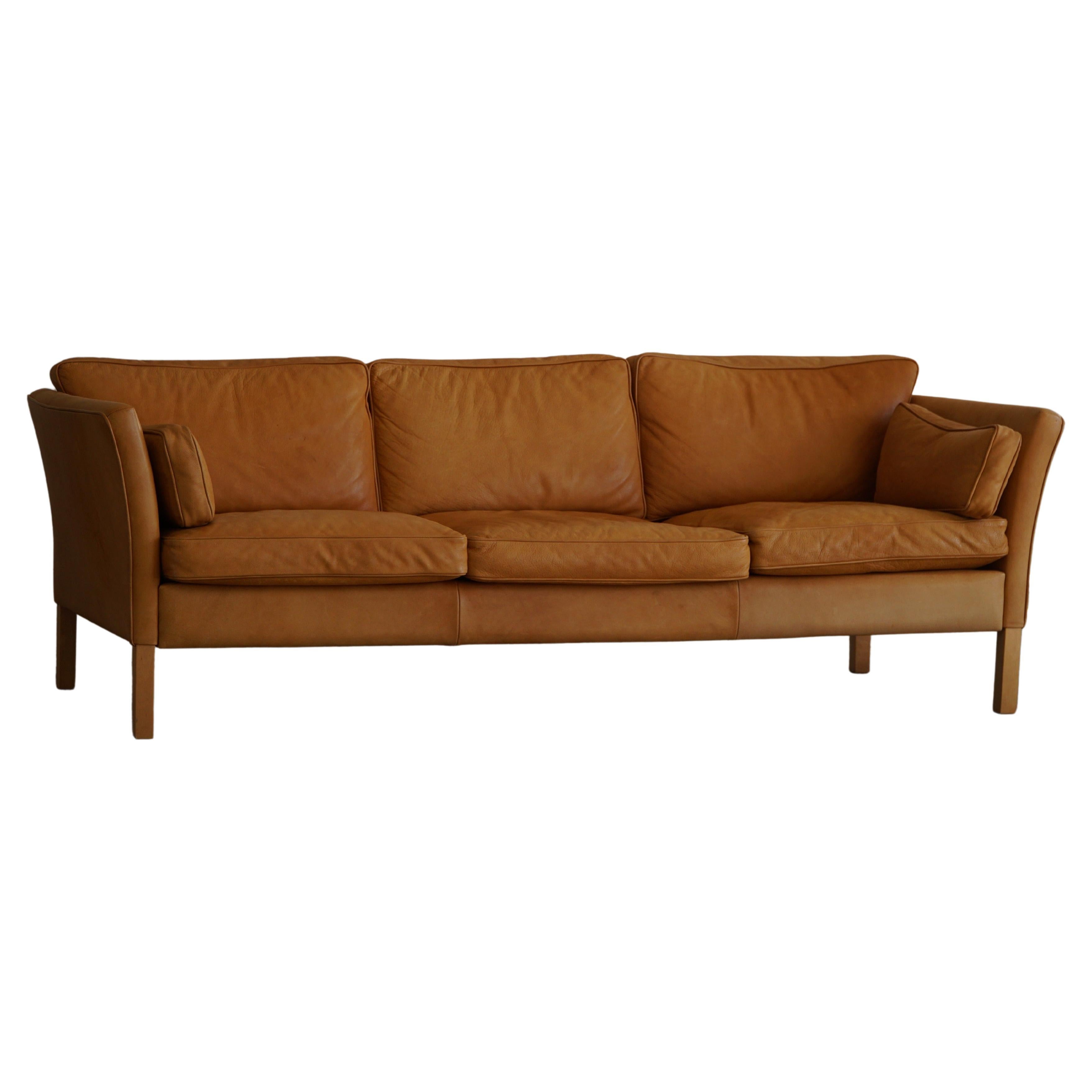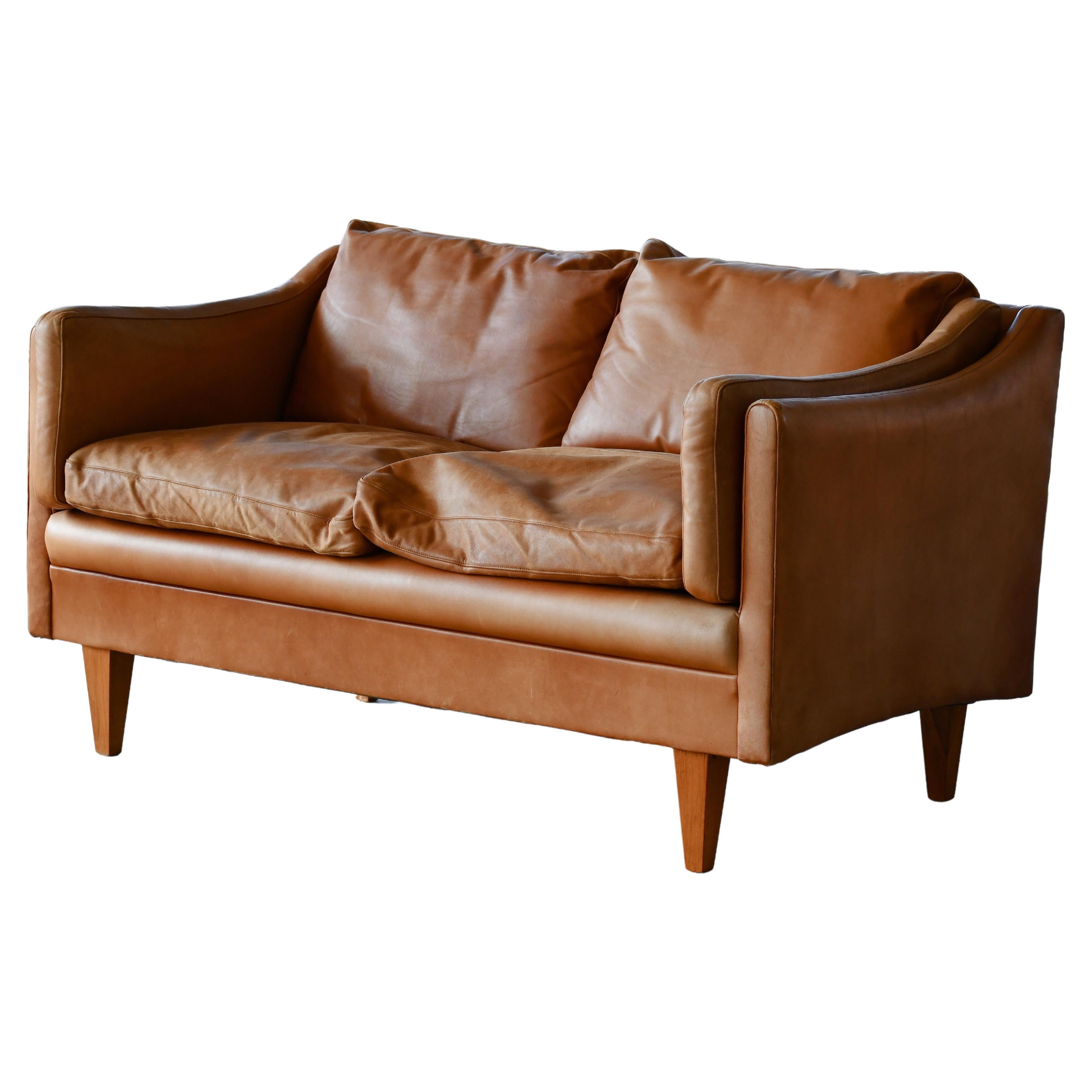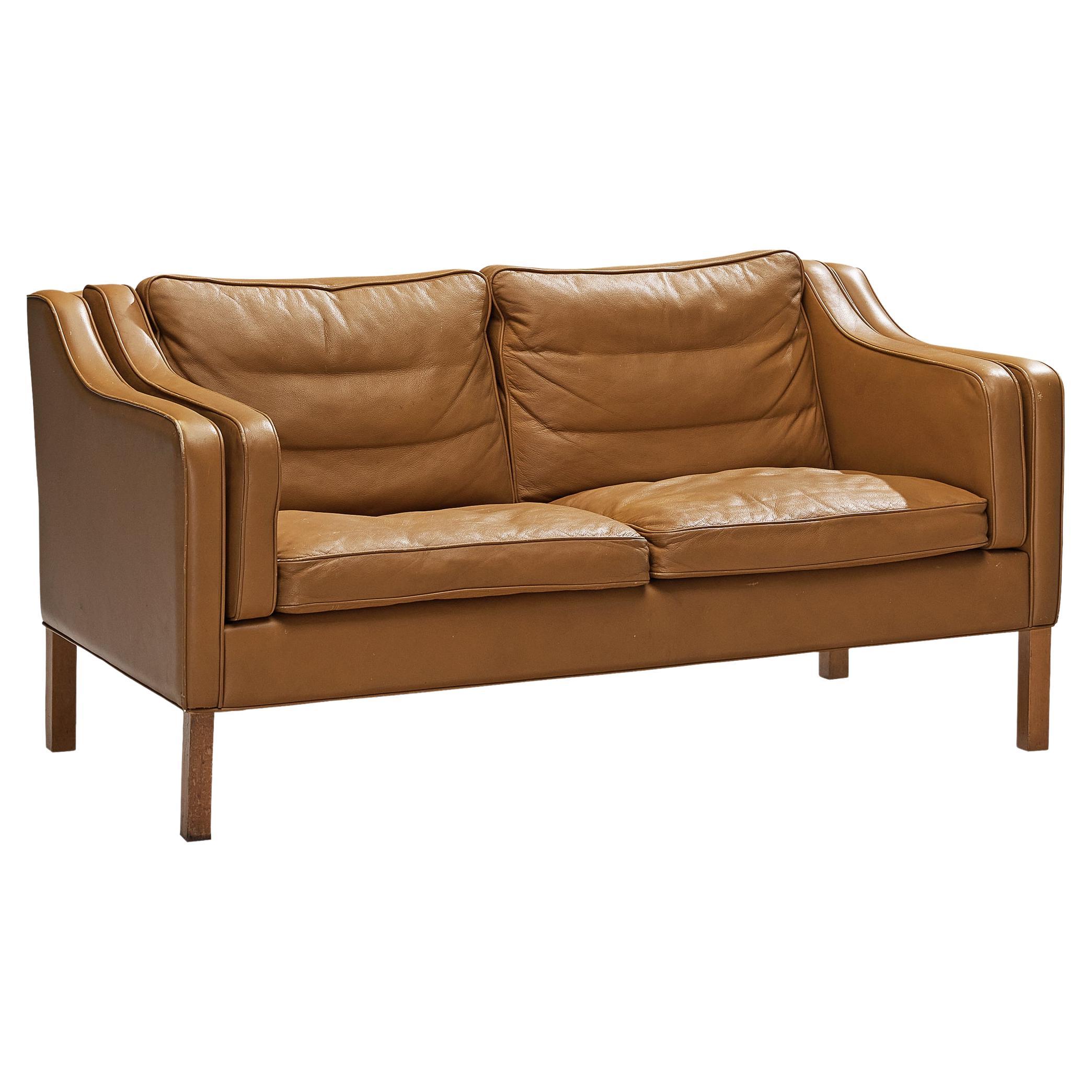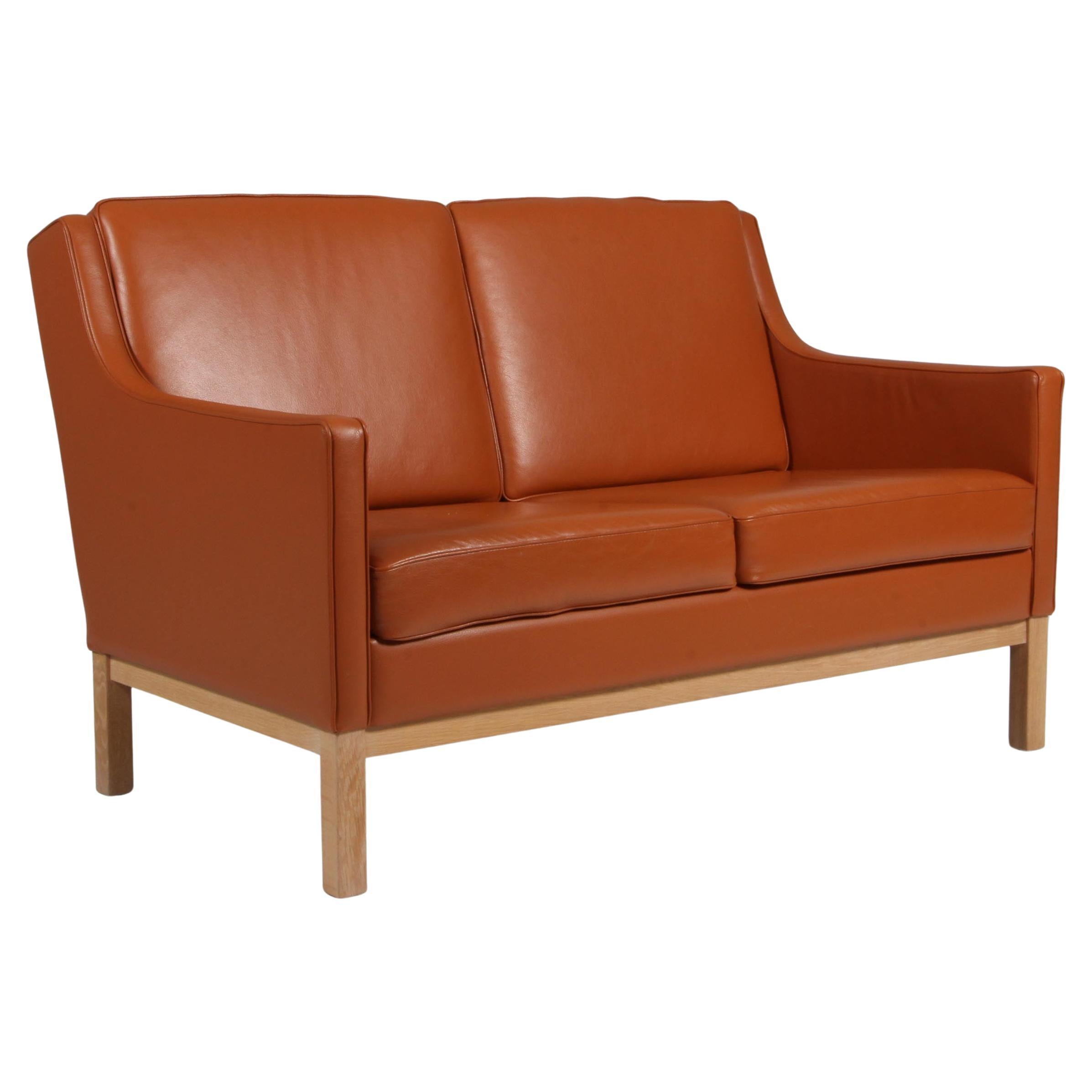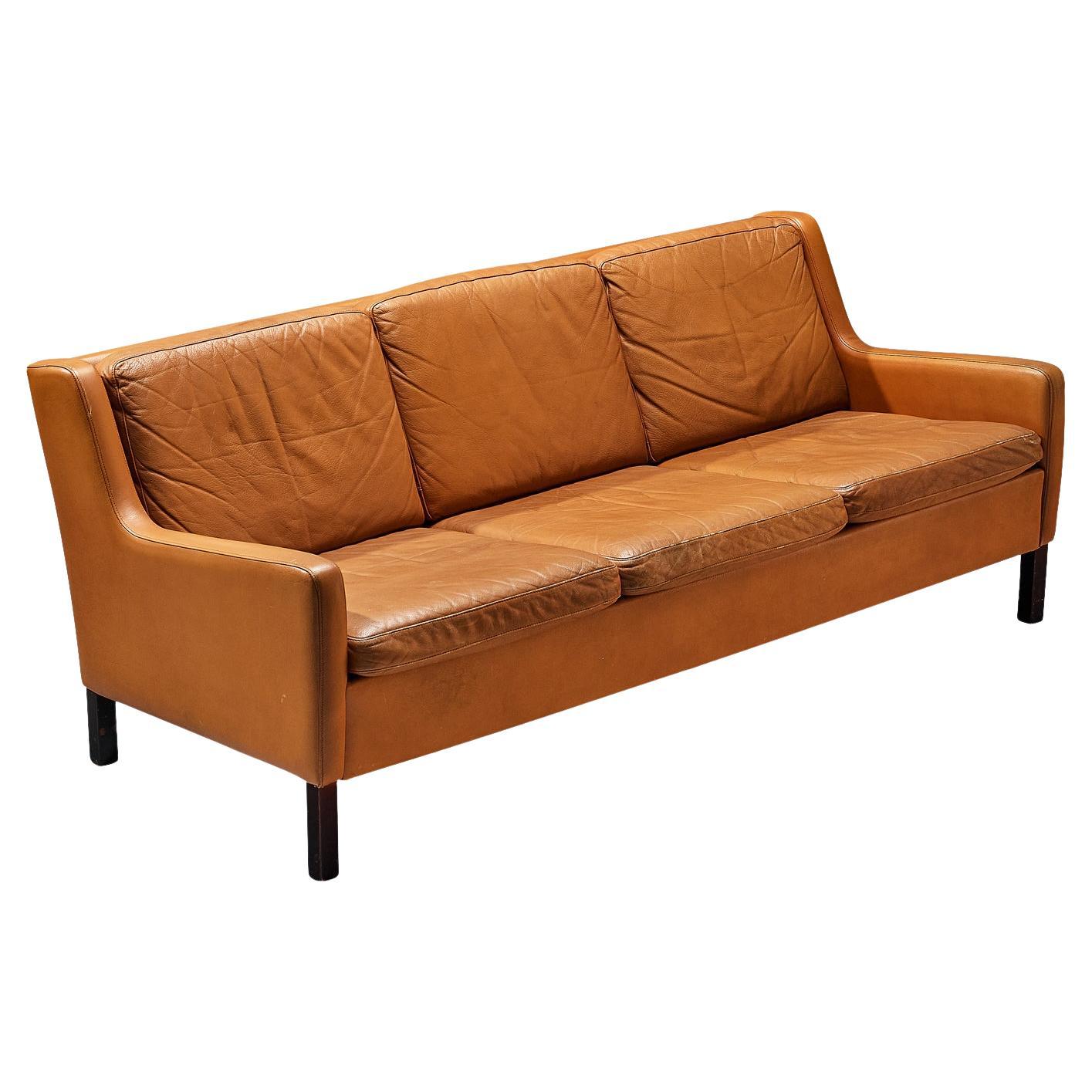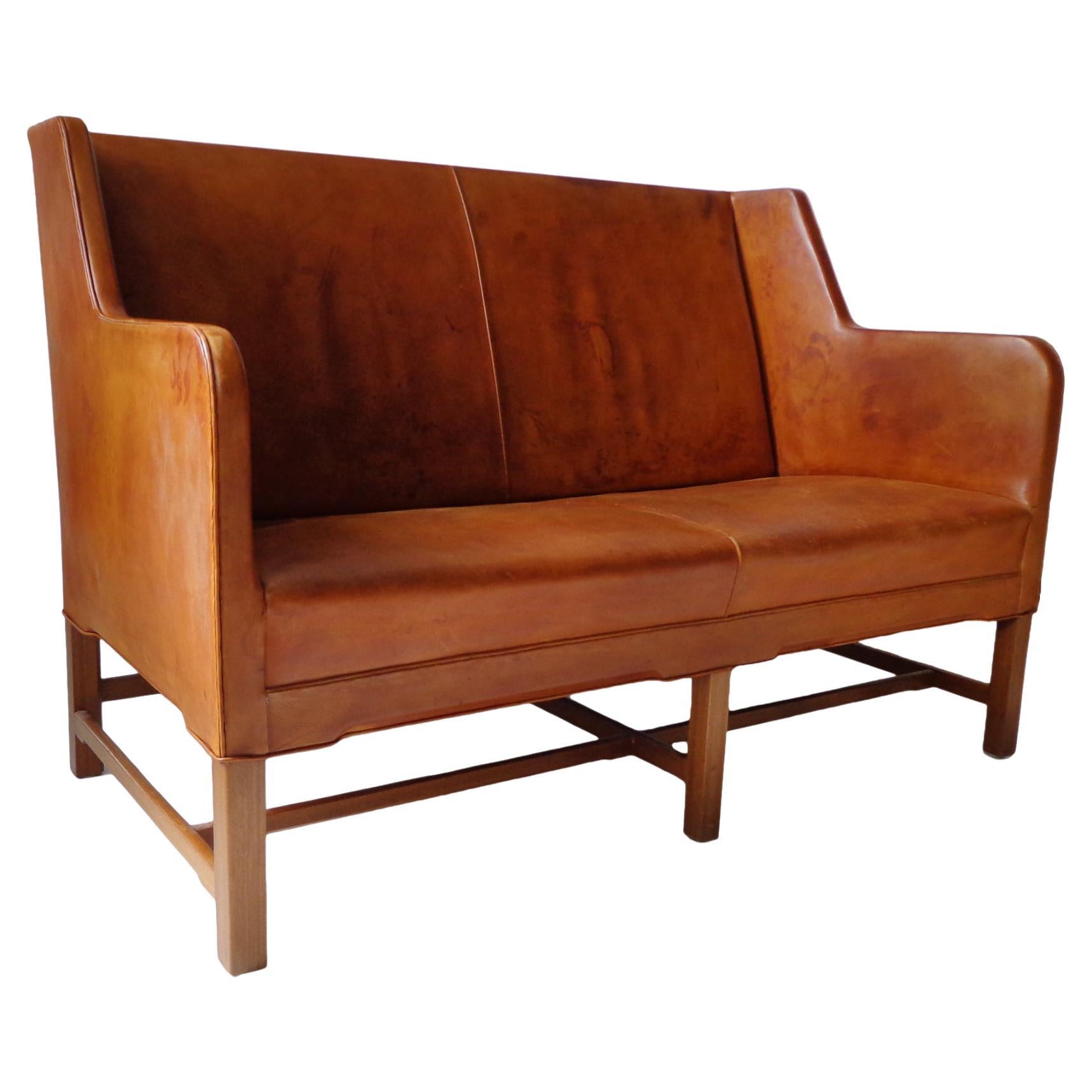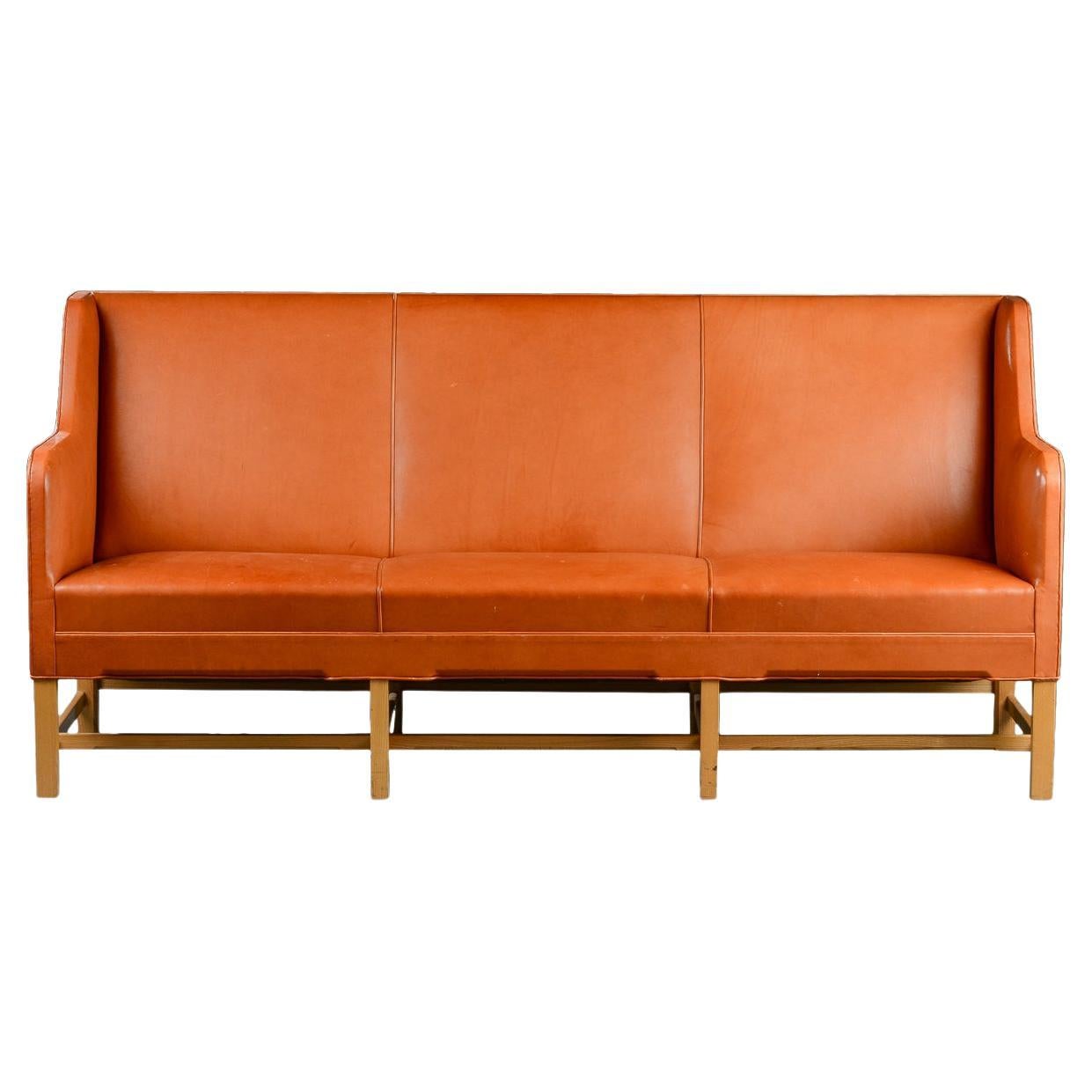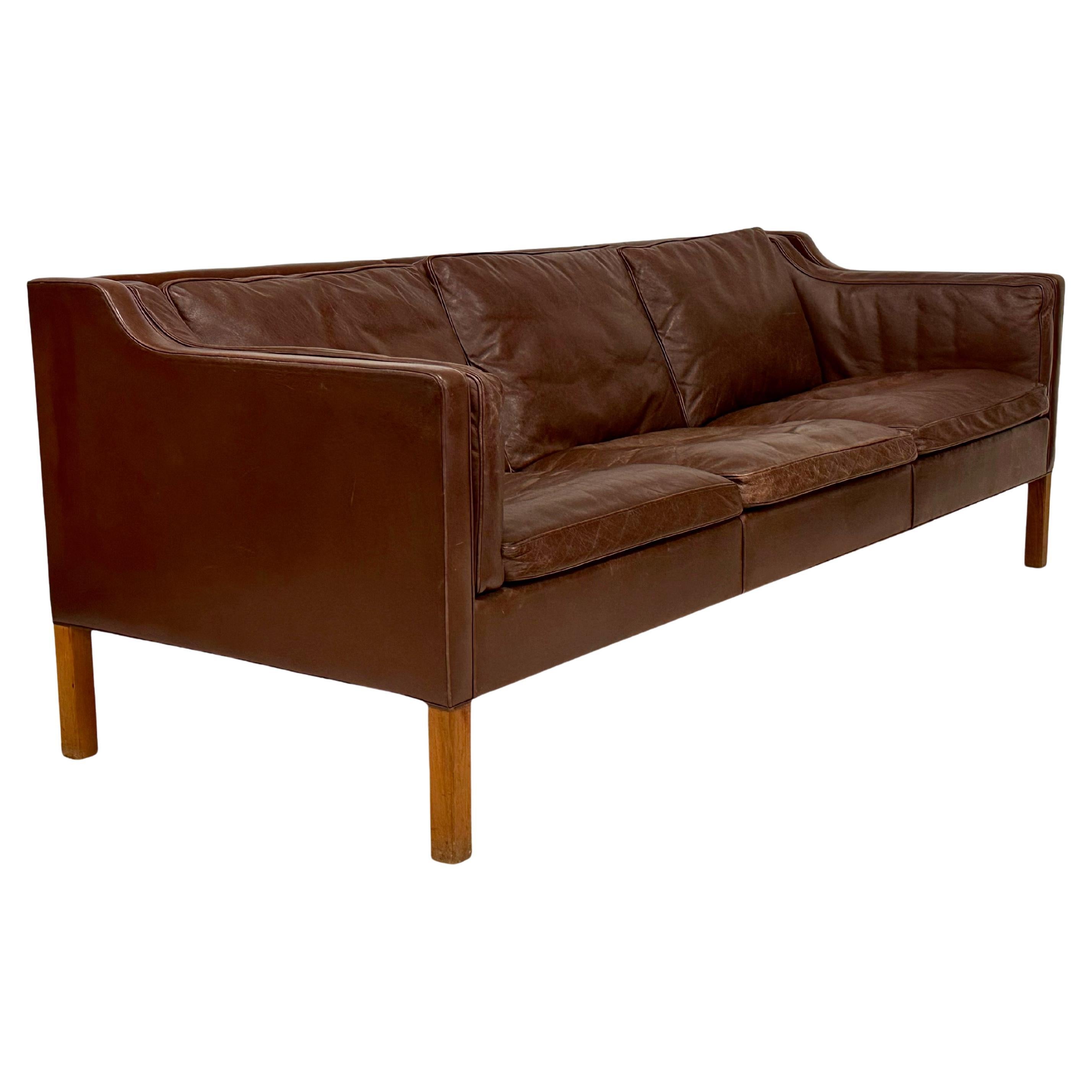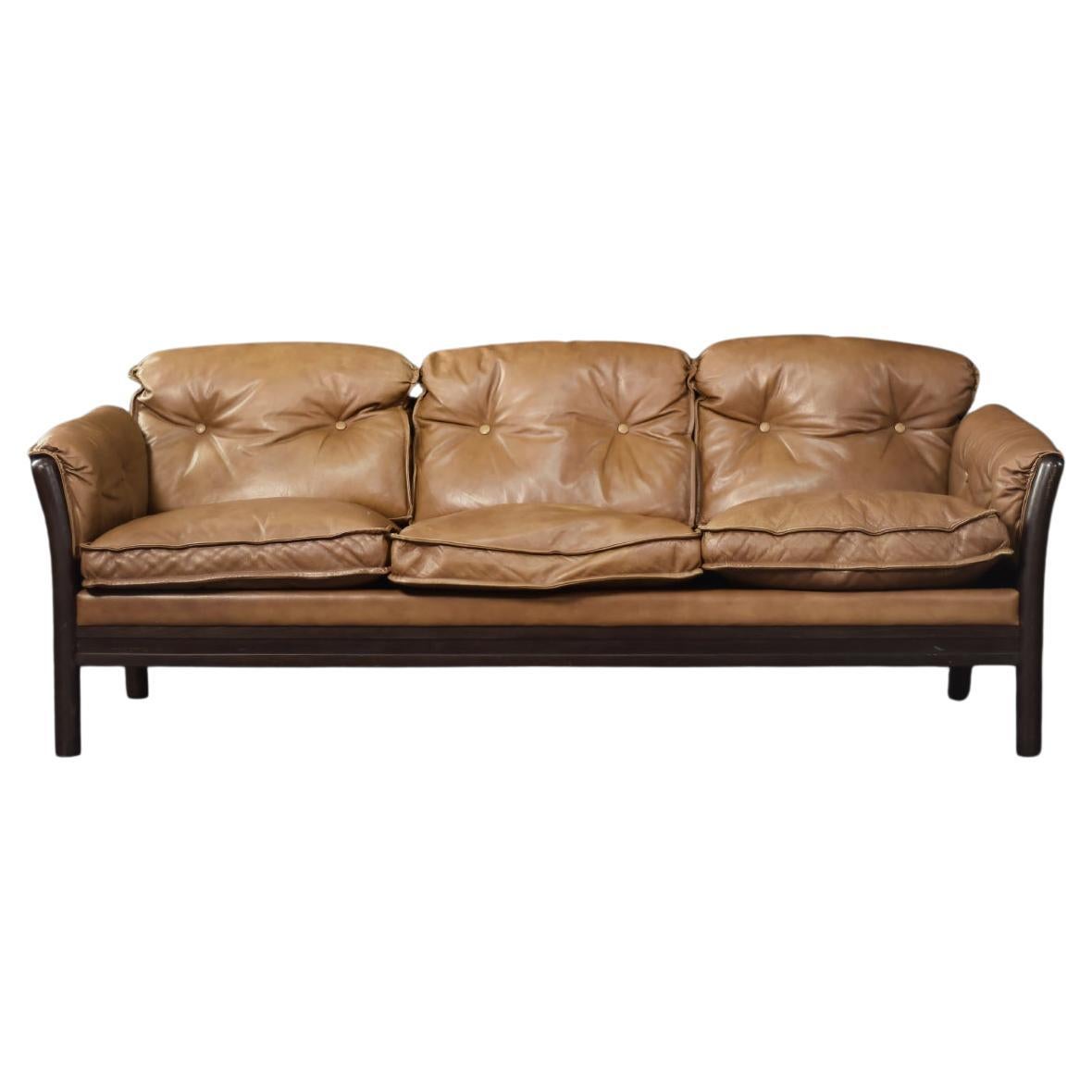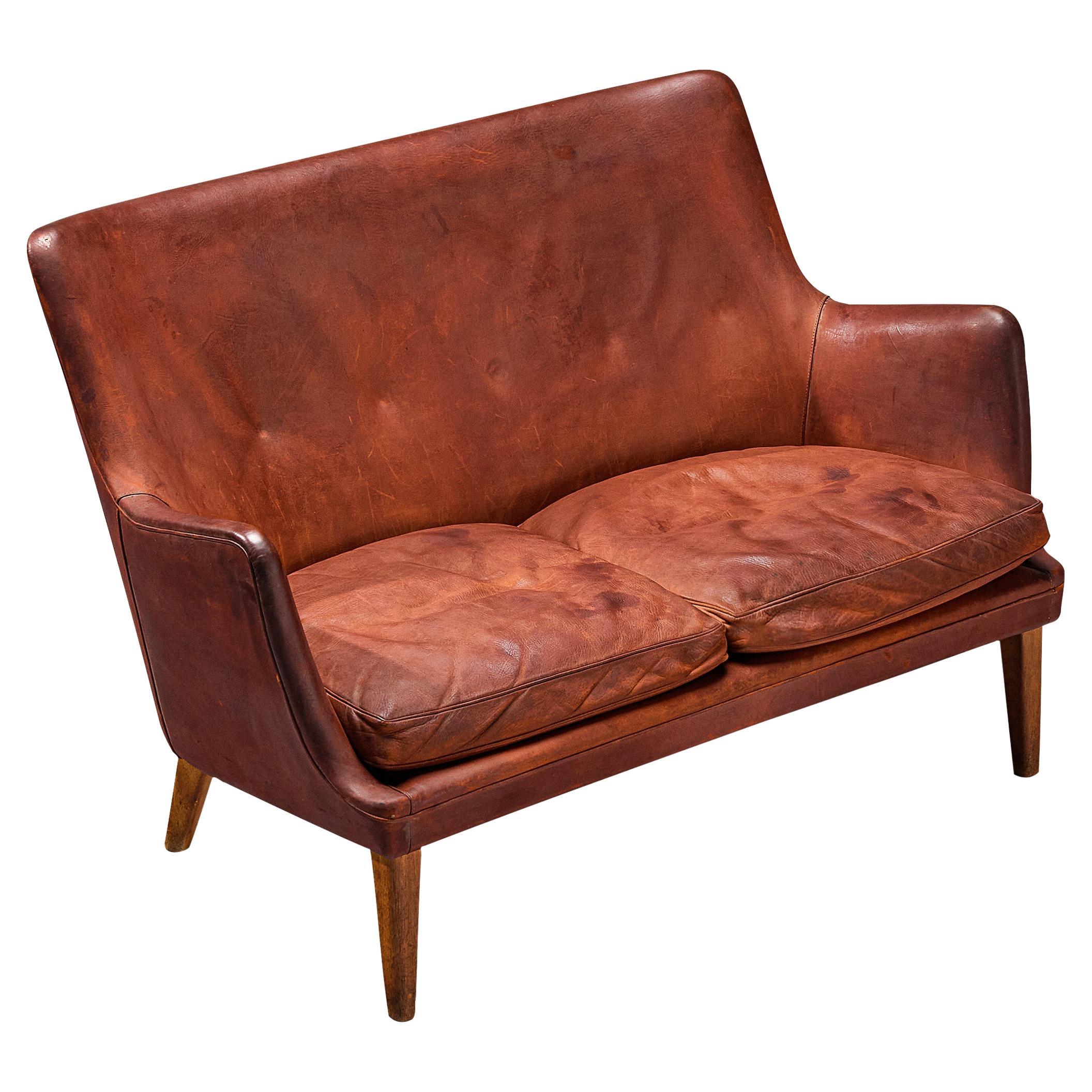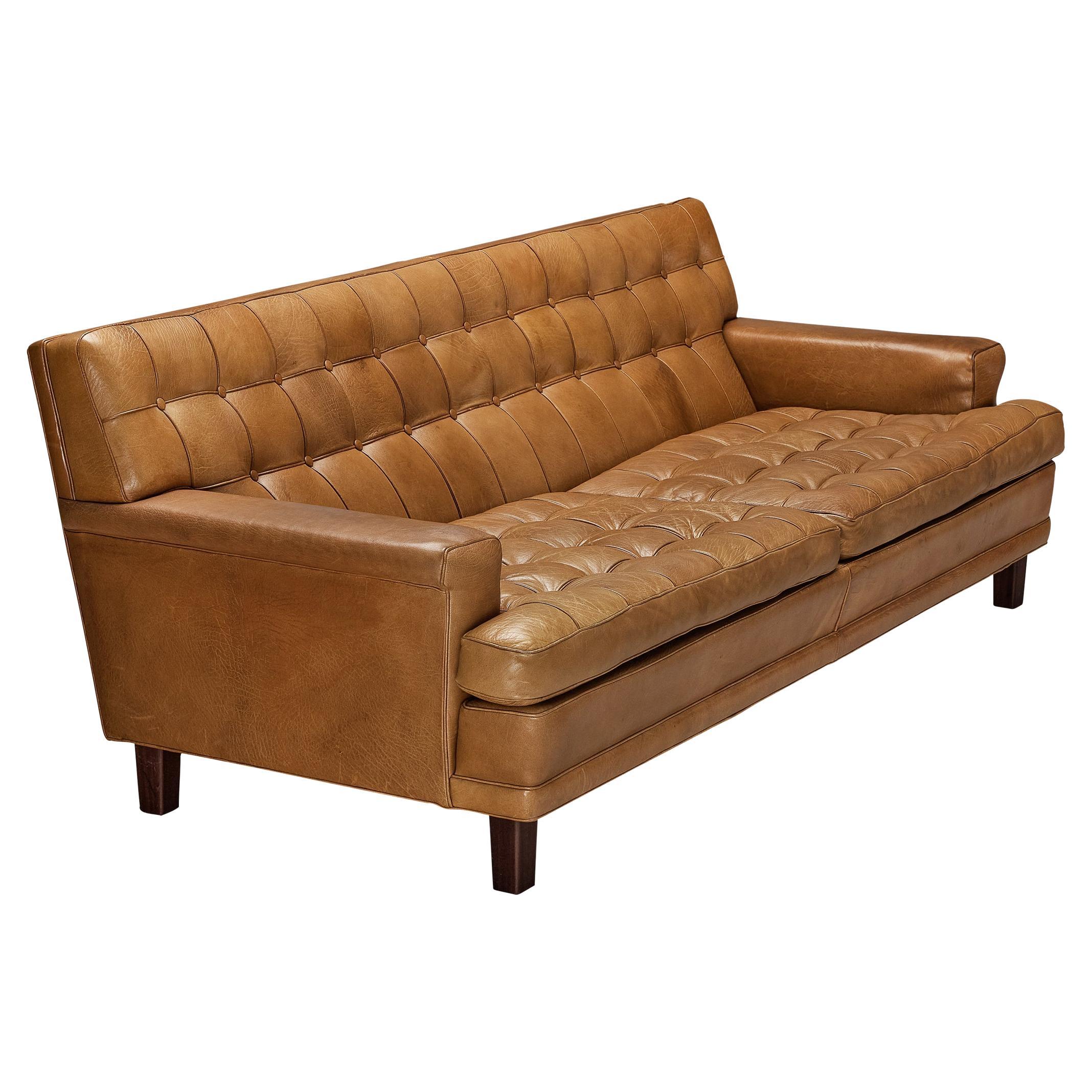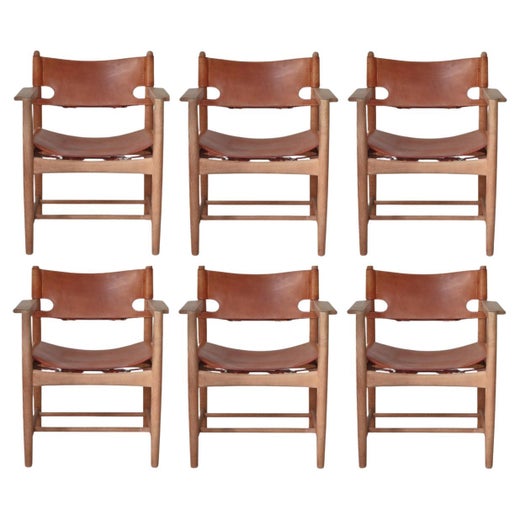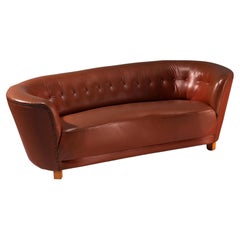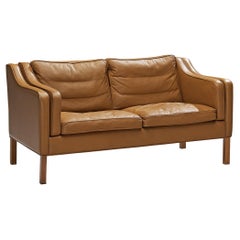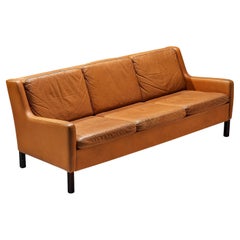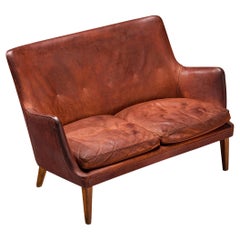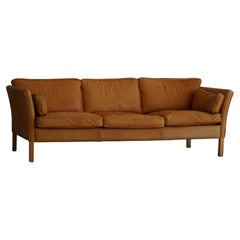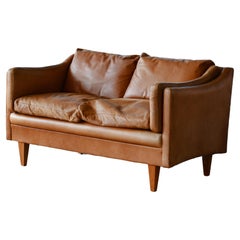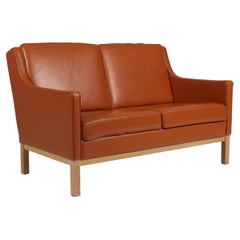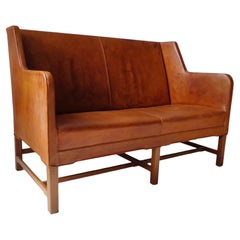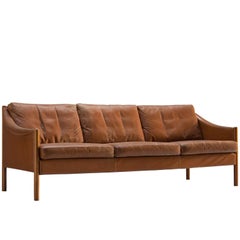
Danish Cognac Leather Sofa
View Similar Items
Danish Cognac Leather Sofa
About the Item
- Creator:Børge Mogensen (Designer)
- Dimensions:Height: 29.14 in (74 cm)Width: 81.11 in (206 cm)Depth: 33.86 in (86 cm)Seat Height: 15.95 in (40.5 cm)
- Style:Scandinavian Modern (Of the Period)
- Materials and Techniques:
- Place of Origin:
- Period:
- Date of Manufacture:1960-1969
- Condition:Wear consistent with age and use.
- Seller Location:Waalwijk, NL
- Reference Number:1stDibs: LU93318733723
Børge Mogensen
Among the great mid-20th century Danish furniture designers, Børge Mogensen distinguished himself with his faith to traditional values of craftsmanship and honesty of materials.
While peers such as Hans Wegner, Finn Juhl and Arne Jacobsen designed some of the most striking and now iconic furnishings of the era, Mogensen focused on making chairs, sofas and other pieces that were simple, durable and comfortable — and in the long run perhaps more useful and better loved.
Mogensen studied under and later worked for Kaare Klint, a master cabinetmaker whose chief tenets were quality of construction and simplicity of line. Klint was a classicist, who believed that furniture forms should evolve from those of historical models. So, too, in his way was Mogensen, as two of his best-known earlier pieces attest.
His 1945 Spokeback sofa, with hinged arms that can be lowered to facilitate lounging, is a reinterpretation of the venerable Knole settee. With the oval silhouette of its plywood backrest and waterdrop-shaped cutouts, Mogensen’s Shell chair, designed in 1949, can be seen as a novel take on early 19th-century Empire side chairs.
Yet Mogensen shared the aesthetical sensibilities of his most forward-looking colleagues. His cabinets deploy the same spare geometries and lushly figured woods as those of Ludwig Mies van der Rohe and his disciple Florence Knoll, the chief difference being that Mies and Knoll used chrome steel for the frames and legs of their pieces. The brawny oak frames and slung leather seats and backrests of Mogensen’s Hunting chair (1950) and Spanish chair (1958) display the same hefty construction and appreciation of natural materials seen in the work of Charlotte Perriand and Sergio Rodrigues.
Mogensen designed for function more than sculptural effect. While his chairs may not be the first pieces in a décor to draw the eye, they are often the first to draw in those looking for a comfortable seat.
Find vintage Børge Mogensen dining tables, bookcases and other Scandinavian modern furniture for sale on 1stDibs.

Established in 2006, Morentz has a team of approximately 55 restorers, upholsterers, interior advisers and art historians, making it a gallery, workshop and upholstery studio, all in one. Every day, a carefully selected array of 20th-century furniture arrives from all over the world at the firm’s warehouse, where the team thoroughly examines each piece to determine what, if any, work needs to be done. Whether that means new upholstery or a complete restoration, Morentz's aim is always to honor the designer’s intention while fulfilling the wishes of the client. The team is up to any challenge, from restoring a single piece to its original glory to furnishing a large-scale hotel project.
More From This Seller
View AllVintage 1950s Danish Scandinavian Modern Sofas
Brass
Vintage 1960s Danish Mid-Century Modern Sofas
Leather, Wood
Vintage 1960s Danish Scandinavian Modern Sofas
Leather, Wood
Vintage 1950s Danish Scandinavian Modern Sofas
Leather, Teak
Vintage 1960s Swedish Scandinavian Modern Sofas
Leather, Mahogany
Vintage 1950s Finnish Scandinavian Modern Sofas
Brass
You May Also Like
Mid-20th Century Danish Mid-Century Modern Sofas
Leather, Beech
Vintage 1960s Danish Mid-Century Modern Loveseats
Leather, Teak
Vintage 1960s Danish Scandinavian Modern Sofas
Leather, Oak
Vintage 1940s Danish Scandinavian Modern Sofas
Leather, Mahogany
Vintage 1970s Danish Scandinavian Modern Sofas
Leather, Ash
Vintage 1950s Danish Scandinavian Modern Sofas
Leather, Oak
